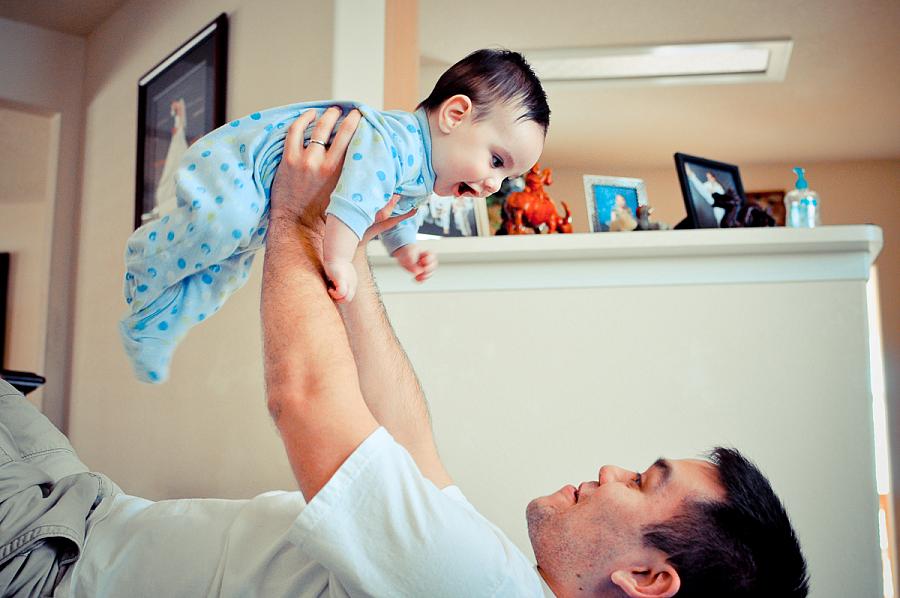Preschool is important, but years before are crucial

Researchers say the quality of adult-child interactions is key.
Preschool is having quite the moment these days. President Obama pushes “high-quality universal preschool” in speech after speech, governors are racing to launch new pre-K programs around the country, and reputable new research suggests that the right kind of programs can have a major impact on a child’s later-in-life health. It’s not inconceivable that in a few years, parents will approach preschool applications with the same zealous competiveness that has long been a hallmark of college admissions.
But for some kids at least, preschool’s promise may come a bit late. One of the recurring themes in the emerging science on early childhood is that early is rarely early enough. Research is finding that many of the skills and behavioral traits that allow a child to succeed in pre-K and kindergarten are laid down even earlier, in the first few years of life. And when kids don’t get the kind of warm, responsive interactions they need with adults, even the best preschool is unlikely to fully unwind the damage.
In talking about how a child’s brain develops in the first years of life, experts often lean on a sports metaphor: “Serve and return.” A child squeals and mom coos back, or dad makes a silly face, and the baby giggles, or a toddler points to a stuffed animal and grandma says, “Bear!” Those constant, ongoing exchanges between the adults and child may seem trivial, but early childhood experts say they are some of the most critical experiences in a young child’s life, with so much depending on their quality.
“Those interactions are literally building brain circuits,” Dr. Jack Shonkoff, director of Harvard's Center on the Developing Child, recently explained to WGBH’s Kara Miller. “And when the interactions are positive and predictable and stable, you build strong brain circuits. And when they’re disruptive or uncertain or non-stable or abusive and neglectful, you build weak brain circuits.”
Those interactions help fuel an explosion of neural circuits that take shape in the first five years of life, linking disparate parts of the brain and growing stronger as learning and experience reinforce connections. When things go well, a child enters preschool age with the raw ingredients for success, many of which are associated with a robust prefrontal cortex: working memory, an ability to sit still and focus, a budding capacity to defer gratification and control impulses, and so forth.
Conversely, a whole host of problems arise when the serve-and-return dynamic gets skimped or neglected, typically due to parents or caregivers who may be inattentive, abusive or absent altogether. The well-known “Still Face Experiment,” led by Dr. Edward Tronick at the University of Massachusetts, Boston, vividly captures the effect. When the mother’s animated face suddenly stops responding to the child, the baby immediately registers something is amiss, and, with increasing desperation, tries to win back mom’s attention. When all else fails, the baby collapses in tears.
Such experiences trigger a child’s stress system, raising the heart levels and flooding the body with stress hormones before order is restored or the threat subsides. But in situations of chronic neglect or abuse, where there is no adult presence to comfort and calm, a child’s stress response can stay elevated. And as the body’s stress-response system stays “turned on,” stress over time turns into the far more serious toxic stress, which researchers say is capable of eroding neural connections, impairing brain functioning, and raising the risk of chronic disease later in life.
That means that by the time preschool rolls around, there are already serious cognitive and behavioral gaps between children who received more or less support from parents and caregivers. That’s one reason there has been more and more emphasis recently on building the skills and abilities of adults as a way of building up kids. Helping the adults – who themselves likely didn’t get the attention and care they needed as children – may in turn be the best way to help the kids in their care.
Here’s Shonkoff again sharing his policy prescription with WGBH:
We have to recognize that preschool for everyone … makes a lot of sense. But not doing anything before age 4 for children at greatest risk is a huge mistake that we pay a tremendous price for later. And the answer is not formal schooling — the answer is working with the adults who are the important influences on these children’s lives.
Doing such skill-building work with underprivileged adults is often slow, costly, labor-intensive work. But if early childhood researchers are right, it could also be an investment that pays off handsomely in the form of happier, healthier, better-adjusted kids who will in turn be better positioned to eventually return their own kids’ serves.
Photo by Joe Van via Flickr.
Related posts
New Study of Classic Early Childhood Program Shows Big Health Gains
Leading Early Childhood Expert Seeks Missing Breakthroughs
Video Engages Viewers In New Child Development Theory
When It Comes to Making Preschool Work, Quality is Key
New Report Distills Decades of Preschool Research
Language Gap Between Rich and Poor Evident in Toddlers

